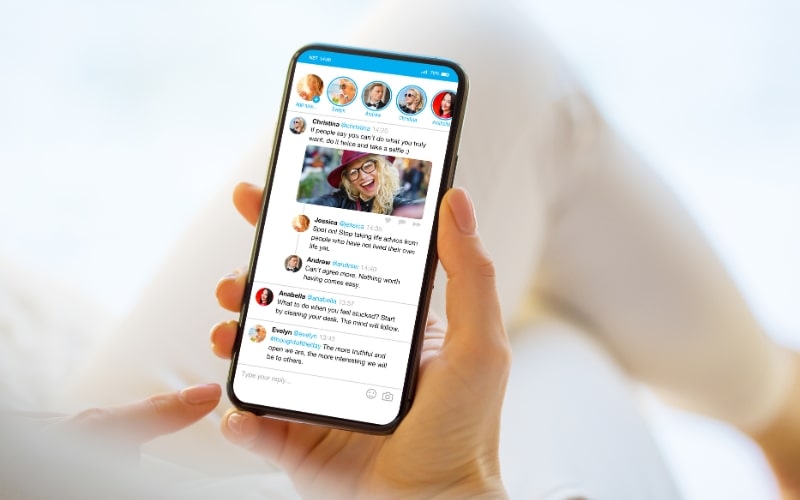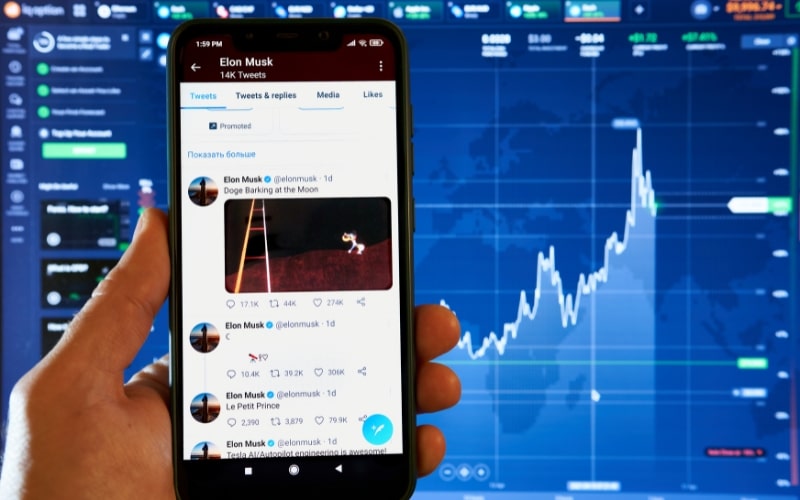In today’s competitive job market, leveraging social media platforms like Twitter can be a game-changer for job seekers. Twitter, with its real-time updates and vast networking opportunities, offers a unique platform for individuals to connect with industry leaders, discover job openings, and showcase their professional expertise. Unlike other social media sites, Twitter allows for direct engagement with potential employers and influencers, providing a more dynamic and interactive job search experience. This article, titled “How to Find Your Next Job Using Twitter,” explores five essential strategies for using Twitter effectively in your job search, from creating a professional profile to directly reaching out to employers.
1. Creating a Professional Twitter Profile

In today’s digital age, social media has become a powerful tool for job seekers. Among the myriad of platforms available, Twitter stands out as a unique space where professionals can network, engage with industry leaders, and discover job opportunities. To leverage Twitter effectively in your job search, it all begins with creating a professional profile that reflects your personal brand and showcases your skills and experiences. Here’s how you can optimize your Twitter profile to attract potential employers.
Profile Picture and Header
Your profile picture is the first thing people notice about your Twitter profile. Choose a high-quality, professional-looking photo that clearly shows your face. This should be similar to the kind of photo you’d use on LinkedIn—a headshot with a friendly, approachable expression. Avoid using casual or group photos as they can appear unprofessional.
The header image is another opportunity to convey professionalism. Use this space to showcase something related to your industry or personal brand. This could be an image of you speaking at a conference, a professional setting related to your field, or a branded graphic that includes your tagline or motto.
Crafting an Effective Bio
Your Twitter bio is a brief yet powerful way to introduce yourself. You have 160 characters to summarize who you are and what you do. Use industry-specific keywords to increase your profile’s visibility in searches. Start with your current job title or profession, followed by key skills or areas of expertise. If you have space, add a personal touch with a hobby or a fun fact, but ensure it aligns with the professional image you want to project.
For example: “Marketing Manager | Content Strategist | Passionate about Digital Marketing & SEO | Coffee Enthusiast ☕️”
Including hashtags relevant to your industry (e.g., #DigitalMarketing, #SEO) can also help your profile get noticed by potential employers and recruiters searching for those terms.
Location and Website
Including your location can help local recruiters find you more easily. If you’re open to relocation, you can note that as well. Additionally, if you have a personal website, portfolio, or LinkedIn profile, include the link in your Twitter profile. This provides recruiters and potential employers with more detailed information about your professional background and achievements.
Pinned Tweet
Use the pinned tweet feature to highlight a significant achievement, a link to your resume, or a post that encapsulates your professional ethos. This tweet will stay at the top of your profile, making it the first thing visitors see after your bio. For instance, you could pin a tweet about a recent project you completed, an article you published, or a professional accomplishment.
Consistent Branding
Consistency is key in creating a recognizable personal brand. Use the same profile picture and similar language across all your professional social media accounts. This consistency helps to build your online presence and makes it easier for potential employers to recognize you across different platforms.
Regular Activity and Professional Conduct
Once your profile is set up, regular activity is crucial. Tweet about industry trends, share insights from articles, and comment on posts from leaders in your field. Engage in Twitter chats and discussions to showcase your knowledge and stay visible. Remember to maintain professionalism in all interactions; your tweets and replies should reflect the kind of employee you aspire to be.
2. Building a Network and Engaging with Influencers

Twitter is more than just a platform for sharing updates; it’s a powerful tool for networking and engaging with industry influencers. Building a strong network on Twitter can open doors to job opportunities, provide industry insights, and help you establish yourself as a thought leader in your field. Here’s how you can effectively build a network and engage with influencers on Twitter to enhance your job search.
Follow Industry Leaders and Companies
The first step in building your network is to follow key players in your industry. Identify thought leaders, influential companies, and prominent recruiters. Look for individuals and organizations that frequently share valuable content, insights, and job opportunities related to your field. Twitter’s search function and lists can help you discover and organize these accounts.
To start, create a list of the top companies you’re interested in working for and follow their official Twitter accounts. Additionally, follow the personal accounts of their executives and hiring managers. This allows you to stay updated on company news, job openings, and industry trends.
Engage with Content
Following influencers is only the beginning; actively engaging with their content is crucial. Like, retweet, and comment on posts that resonate with you or align with your professional interests. Thoughtful engagement can help you get noticed by influencers and their followers.
When commenting, aim to add value to the conversation. Share your insights, ask thoughtful questions, and contribute to discussions. This not only showcases your expertise but also demonstrates your enthusiasm and proactive attitude. Over time, influencers and other professionals in your network will recognize your contributions and start engaging with you.
Participate in Twitter Chats
Twitter chats are scheduled discussions centered around specific topics, often hosted by industry experts or organizations. Participating in these chats is a great way to connect with like-minded professionals and influencers.
To find relevant Twitter chats, search for hashtags related to your industry, such as #MarketingChat, #TechTalk, or #JobHuntChat. Join the conversation by responding to questions, sharing your thoughts, and interacting with other participants. Regular participation in Twitter chats can help you build relationships with influencers and stay informed about industry trends.
Share Valuable Content
Consistently sharing valuable content is essential for building a strong network on Twitter. Share articles, insights, and resources that are relevant to your industry and interests. Curate content from reputable sources and add your perspective to spark discussions.
In addition to sharing external content, create and share your original content. This could include blog posts, infographics, or even short threads that offer tips and advice. Original content helps establish you as a thought leader and can attract the attention of influencers and potential employers.
Direct Engagement with Influencers
Don’t be afraid to reach out directly to influencers. If you have a genuine reason to connect, such as seeking advice or expressing appreciation for their work, send a respectful and concise direct message (DM). Personalize your message to show that you’ve done your research and have a clear purpose for reaching out.
For example: “Hi [Influencer’s Name], I recently read your article on [Topic], and I found your insights on [specific point] incredibly valuable. As someone who is passionate about [related field], I would love to connect and learn more about your perspective on [related topic]. Thank you for sharing your expertise!”
Leverage Twitter Lists
Twitter lists are a powerful tool for organizing your network. Create lists for different categories, such as industry leaders, potential employers, and recruiters. This helps you keep track of their tweets and engage with their content more efficiently.
Public lists can also showcase your industry connections to others, demonstrating your active involvement in the field. On the other hand, private lists allow you to organize your contacts without making them public.
Attend and Engage in Virtual Events
Many industry conferences and events have a Twitter presence, often using specific hashtags. Participate in these events by tweeting your thoughts, responding to other attendees, and engaging with speakers. This not only helps you build your network but also positions you as an active participant in your industry.
3. Using Twitter Lists to Organize Job Search Efforts

Twitter can be a powerful tool for job seekers when used strategically. One of the most effective features for organizing your job search is Twitter Lists. These allow you to categorize and manage the accounts you follow, making it easier to stay on top of job opportunities and industry news. Here’s a detailed guide on how to use Twitter Lists to streamline your job search efforts.
What Are Twitter Lists?
Twitter Lists are a way to organize the accounts you follow into specific groups. Unlike the main Twitter feed, which can become cluttered with a variety of content, Lists provide a focused stream of tweets from selected users. This feature can be invaluable for job seekers who need to monitor tweets from recruiters, companies, industry leaders, and job boards without distraction.
Creating Twitter Lists
To get started, create Lists based on different aspects of your job search. Here are some ideas:
Recruiters and Hiring Managers: Include accounts of recruiters and hiring managers who frequently post job openings or industry insights. This List helps you stay updated on new opportunities and network with key individuals.
Target Companies: Create a List of companies you are interested in working for. Follow their official accounts, as well as the accounts of their executives and HR departments. This keeps you informed about company news, job postings, and any changes that might affect your job search.
Industry Experts and Influencers: Follow thought leaders and influencers in your field. This List provides valuable insights into industry trends and best practices, helping you stay current and relevant.
Job Boards and Career Resources: Add accounts of popular job boards, career websites, and professional organizations. This ensures you don’t miss out on job listings, career advice, and industry events.
Networking Groups and Events: Include accounts that host or announce networking events, webinars, and industry conferences. This helps you find opportunities to connect with professionals in your field.
Managing and Engaging with Lists
Once you have created your Lists, the next step is to manage and engage with them effectively:
Regular Monitoring: Check your Lists daily to stay updated on the latest tweets. This ensures you don’t miss out on job postings or important industry news.
Engage with Content: Actively engage with the tweets in your Lists. Like, retweet, and comment on posts that are relevant to your job search. This increases your visibility and helps build relationships with key individuals.
Update Your Lists: Periodically review and update your Lists. Remove inactive accounts and add new ones to keep your Lists current and relevant.
Private vs. Public Lists: Decide whether to make your Lists public or private. Public Lists can showcase your industry connections to others, while private Lists allow you to organize your job search discreetly.
Leveraging Lists for Job Search
Here’s how you can leverage Twitter Lists specifically for your job search:
Monitor Job Postings: By following recruiters, hiring managers, and job boards, you can quickly spot new job postings. This gives you a competitive edge as you can apply early and increase your chances of being noticed.
Research Target Companies: Use your List of target companies to stay updated on their news and developments. This information can be useful when tailoring your applications and preparing for interviews.
Gain Industry Insights: Following industry experts and influencers provides you with insights into current trends and best practices. This knowledge can help you stand out in interviews and demonstrate your expertise.
Network Effectively: Engage with tweets from your networking groups and events List. Participate in discussions and share your thoughts. This helps you build relationships and expand your professional network.
Stay Motivated and Informed: Job searching can be a long and challenging process. Using Twitter Lists keeps you organized and ensures you are always informed about new opportunities and industry trends, helping you stay motivated and focused.
4. Leveraging Twitter Hashtags for Job Search

Using hashtags effectively on Twitter can significantly enhance your job search efforts. Hashtags organize content and make it easier to discover posts related to specific topics, including job opportunities. Here’s how you can leverage Twitter hashtags to find your next job.
Understanding Hashtags
Hashtags are keywords or phrases preceded by the “#” symbol, used to categorize tweets. By clicking on a hashtag, you can view all tweets that include that tag. This feature is particularly useful for job seekers, as it allows you to find job postings, industry discussions, and networking opportunities quickly.
Key Job Search Hashtags
To make the most of hashtags, it’s essential to know which ones are relevant to your job search. Here are some popular hashtags that can help you find job opportunities and industry insights:
#JobSearch: This general hashtag is used by job seekers and employers alike. It’s a good starting point to find job-related content.
#JobOpening: Employers often use this hashtag when posting new job openings. Regularly check this hashtag for the latest job opportunities.
#Hiring: Similar to #JobOpening, this hashtag is used by companies looking to fill positions. It’s a must-follow for job seekers.
#Careers: This hashtag covers a wide range of career-related topics, including job postings, career advice, and industry news.
#ResumeTips: Use this hashtag to find tips on improving your resume, making it more likely to catch the attention of recruiters.
#JobAdvice: This hashtag provides valuable advice on job searching, interviewing, and career development.
Industry-Specific Hashtags: Depending on your field, there are many industry-specific hashtags you can follow. For example, #MarketingJobs, #TechJobs, #FinanceJobs, etc. These hashtags help you find opportunities tailored to your specific career path.
Using Hashtags to Discover Job Opportunities
Follow Relevant Hashtags: Regularly check hashtags related to job searching and your industry. Set aside time each day to browse these hashtags for new opportunities.
Engage with Posts: When you find job postings or relevant advice, engage with the content. Like, retweet, and comment on posts to show your interest and increase your visibility.
Use Hashtags in Your Tweets: When tweeting about your job search, include relevant hashtags. This increases the likelihood that employers and recruiters will see your tweets. For example, you could tweet: “Excited to explore new opportunities in digital marketing! #JobSearch #MarketingJobs.”
Participate in Hashtag Conversations: Many hashtags are associated with ongoing conversations or communities. Join these discussions to network with professionals in your field and learn about potential job openings. For instance, participating in #JobAdvice conversations can connect you with recruiters who frequently share tips and opportunities.
Finding Networking Opportunities
Hashtags are not just for finding job postings; they can also help you network with industry professionals. Here’s how to use hashtags to build your professional network:
Identify Networking Events: Many industry events, webinars, and conferences use specific hashtags. Follow these hashtags to stay informed about upcoming events and join the conversation during the events. For example, #MarketingConference or #TechSummit.
Engage with Influencers: Influencers and industry leaders often use hashtags when sharing insights and updates. By following and engaging with these hashtags, you can connect with key figures in your industry.
Join Twitter Chats: Twitter chats are scheduled discussions on specific topics, often using a designated hashtag. Participating in these chats can help you connect with like-minded professionals and gain visibility in your field. For example, #JobHuntChat is a popular chat for job seekers.
Tips for Effective Hashtag Use
Be Specific: Use specific hashtags to narrow down your search. For example, instead of just #Jobs, use #MarketingJobs or #EngineeringJobs to find more relevant opportunities.
Don’t Overdo It: While hashtags are helpful, don’t overload your tweets with them. Stick to a few relevant hashtags to keep your tweets professional and easy to read.
Stay Updated: Hashtag trends can change, so stay updated on which hashtags are currently popular in your industry. This ensures you’re always seeing the most relevant content.
5. Reaching Out Directly to Potential Employers

Reaching out directly to potential employers on Twitter can be a powerful strategy in your job search. This proactive approach not only demonstrates your initiative but also helps you stand out from the crowd. Here’s how to effectively reach out to potential employers on Twitter.
Research and Identify Key Contacts
Before reaching out, it’s essential to research and identify the key contacts within the companies you’re interested in. Start by following the company’s official Twitter account to stay updated on their latest news and job postings. Next, identify the key decision-makers such as hiring managers, department heads, and recruiters. Use Twitter’s search function to find these individuals, and take note of their recent tweets to understand their interests and professional focus.
For example, if you’re interested in a marketing role, look for the company’s Marketing Director or HR Manager. Pay attention to their tweets and interactions to gather insights into the company culture and current priorities.
Crafting Your Initial Message
When reaching out to potential employers on Twitter, crafting a concise and compelling initial message is crucial. Your message should introduce yourself, state your interest in the company, and briefly highlight your qualifications. Be sure to personalize the message to show that you’ve done your research.
For example: “Hi [Name], I’m [Your Name], a marketing professional with 5 years of experience in digital marketing and content strategy. I’ve been following [Company] for a while and admire your innovative approach to [specific aspect of the company’s work]. I’m very interested in potential opportunities at [Company] and would love to connect. Thank you!”
Keep your message professional and avoid sounding overly casual. Remember, this is your first impression, so make it count.
Timing and Frequency
Timing is an important factor when reaching out on Twitter. Monitor the activity patterns of your target contacts and try to send your message when they are likely to be active. This increases the chances of your message being seen and responded to promptly.
Avoid sending multiple messages if you don’t receive an immediate response. Give the contact some time to reply, and if you don’t hear back after a week or two, consider sending a polite follow-up message.
Engaging with Their Content
Engaging with the content of your target contacts can help you build a rapport before reaching out directly. Like, retweet, and comment on their posts to increase your visibility and show your interest in their work. When you finally send your message, they may recognize your name and be more likely to respond.
For example, if they tweet about a recent project or company achievement, you could reply with a thoughtful comment such as: “Congratulations on the successful launch of [project]! It’s inspiring to see [Company] leading the way in [industry/field].”
This kind of engagement demonstrates your genuine interest and helps establish a connection.
Following Up and Staying Professional
If you don’t receive a response to your initial message, a polite follow-up can be effective. Express your continued interest and gently remind them of your previous message.
For example: “Hi [Name], I just wanted to follow up on my previous message regarding opportunities at [Company]. I remain very interested in joining your team and would appreciate any information on how I might be able to contribute. Thank you!”
Always maintain a professional tone, even if you don’t receive the response you were hoping for. Remember that building professional relationships takes time and persistence.
Moving the Conversation Forward
If you receive a positive response, be prepared to move the conversation forward. Have your resume and any relevant portfolio pieces ready to share. Suggest scheduling a call or meeting to discuss potential opportunities in more detail.
For example: “Thank you for your response, [Name]. I’d love to discuss how my skills and experiences align with the needs of [Company]. Would you be available for a call next week to explore this further?”
Conclusion – Find your next job using Twitter
Harnessing the power of Twitter for your job search can significantly enhance your visibility and connections within your industry. By creating a professional profile, building a robust network, utilizing Twitter lists, leveraging relevant hashtags, and reaching out directly to potential employers, you can turn Twitter into a powerful tool for career advancement. These strategies not only help you stay informed about job opportunities but also position you as a proactive and engaged professional.
As you implement these techniques, you’ll find that Twitter can open doors to new career prospects and provide valuable industry insights, ultimately helping you land your next job. Need a last-minute boost? Check out “Have a Job Interview Tomorrow! 11th Hour Interview Tips” to ace your interview after finding your next job using Twitter!


